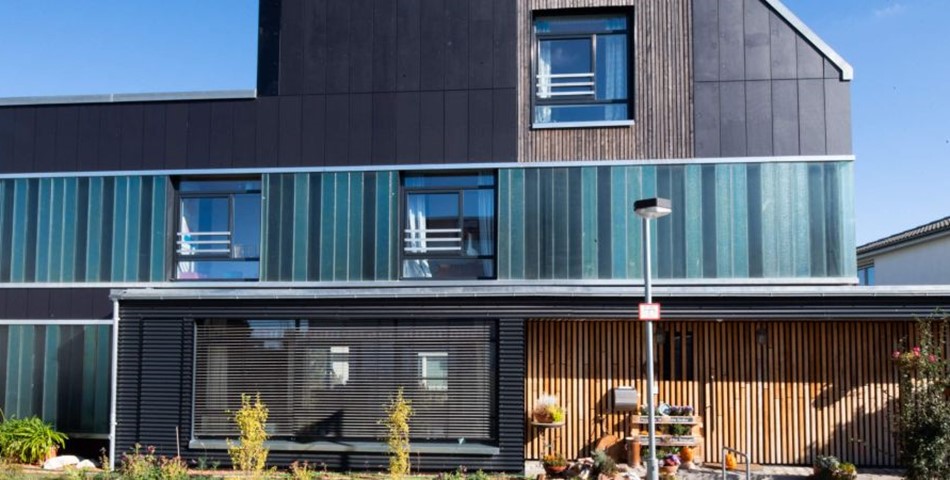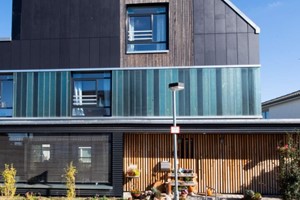Some 220 million tons of construction waste accumulates every year in Germany – recycling ensures that new buildings can be constructed with this material.
Living in a recycling house
Germany’s first recycling house was built in Hanover in 2019. The architects came up with creative solutions to reuse as many materials as possible. Radiators, stairs and several walls consist of sauna benches. The façade insulation is made of recycled jute sacks for cocoa beans. And the windows came from a former youth club.
The project planning took three years. The main reason for this was the time-consuming search for recyclable building materials and firms that were able to install the recycled material. Although this is why the recycling house was not produced in series, it nevertheless sets an example and proves how different materials can be reused in new buildings.
An impact hub made of waste
They collect shower cubicles, letterboxes and banisters: Alice Gedamu, Laurence Pagni and Simon Lee from Berlin want to revolutionize the construction industry. They aim to show how a circular economy can function in the building trade with their CRCLR House project, which is worth millions of euros. The team are using waste materials and straw to build a multistorey house on the grounds of a former brewery. They help themselves to materials in condemned buildings and experiment with materials that are thrown away on other construction sites. This is how the trio aim to keep building costs low to reduce financial pressures on future tenants.
The team handed the CRCLR House over to Impact Hub Berlin in 2021. The network would like to continue developing the building as a model for sustainability and integrated design.
High-rise building made of recycled aluminium
In theory you can recycle aluminium an infinite number of times. Almost no other material has such a long useful life. Depending on the manufacturing process used, however, different volumes of CO2 are emitted. China largely produces aluminium with coal power, which results in the emission of roughly 20 kilograms of CO2 for one kilogram of aluminium. In Europe most firms now rely on renewable energies: one kilogram of aluminium leads to only four kilograms of CO2 emissions.
However, building can be even more sustainable. A Norwegian company uses recycled aluminium in its buildings. This results in only 2.3 kilograms of CO2 per kilogram. The recycled material was recently used in the construction of the Senckenberg Tower in Frankfurt am Main. The façade of the 106-metre-tall office building consists of 95% aluminium, at least three quarters of which was produced from recycled material. As a result, the building avoided over 2,600 tonnes of CO2 emissions compared with conventional production.
Kim Berg













